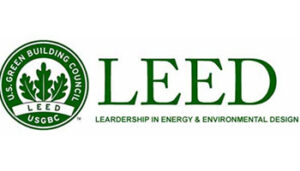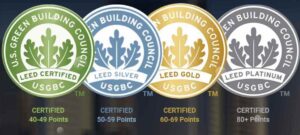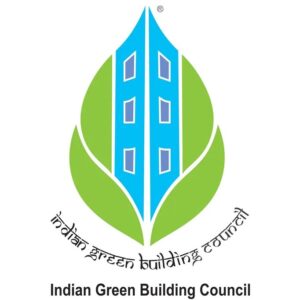
Green architecture is the prevalent trend in the field of architecture but it is not a fad or mere fashion statement. Fast depleting natural resources and global warming are grave concerns for the world community; minimizing our energy usage and waste creation is the need of the hour. Since buildings use more than half of world’s materials and energy and about one-fourth of planet’s fresh water; producing green buildings is not merely an option, it’s a necessity.
What’s a green building?
A structure that ensures efficient use of natural resources (materials, water, energy etc) and minimal generation of non-degradable waste is categorized as a green building. Various techniques and technologies are used to make our buildings green making them more eco-friendly; however, we will talk about these techniques and technologies in another post. Let us discuss at present the ways to know if a building is really green, or for that matter, how green it actually is.
Green building ratings and certification:
You cannot say that a building is green just because it’s owners or architects claim to have created one; one needs third-party certification for the purpose. These third-party agencies develop their rating systems that decide the criteria for declaring if a structure is really green. There are countless agencies working across the globe for this purpose right now; such as LEED, Energy Star Home, Home Energy Rating System (HERS), Green Globes, Living Building Challenge etc. We will discuss the rating systems that are more relevant to the green buildings in India. Let us be clear about the fact that a building doesn’t necessarily need to get green building certification to be green but it does give it credibility and certain benefits if it obtains the certification.
LEED:

The main objective of Leadership in Energy and Environmental Design (LEED) is to change the way we think about how the buildings and communities should be planned, constructed, maintained and operated. LEED is world’s most widely used third-party verification for green buildings.
To get LEED certification, a project has to earn points across several areas related to sustainability issues. Not going into too much detail, based on the points achieved, a building receives one of the four LEED rating levels- Certified, Silver, Gold, Platinum.


GRIHA:
 Green Rating for Integrated Habitat Assessment (GRIHA) is India’s own green building rating system. Griha is a Sanskrit word meaning an abode and is aptly used as a green building rating system in India. Buildings are assessed across 34 criteria categorized in four different sections; such as site selection and planning, conservation and efficient use of natural resources, building maintenance and operation, and innovation etc. 8 of these criteria are mandatory, 4 are part-mandatory and rest are optional. A number of points are assigned to each criterion and based on total points received, a project gets a rating of 1 star to 5 stars.
Green Rating for Integrated Habitat Assessment (GRIHA) is India’s own green building rating system. Griha is a Sanskrit word meaning an abode and is aptly used as a green building rating system in India. Buildings are assessed across 34 criteria categorized in four different sections; such as site selection and planning, conservation and efficient use of natural resources, building maintenance and operation, and innovation etc. 8 of these criteria are mandatory, 4 are part-mandatory and rest are optional. A number of points are assigned to each criterion and based on total points received, a project gets a rating of 1 star to 5 stars.
IGBC:

Indian Green Building Counsel (IGBC), established in the year 2001, has licensed the LEED green building standard from its US counterpart USGBC. It basically facilitates the Indian structures to become green buildings.
Green certification for interiors:
As the awareness about sustainable architecture grew, it was realized that building interiors should adopt eco-friendly outlook, materials, and techniques to make the buildings green in the real sense. Some rating systems have started incorporating the interiors, as a result.
Different Green Building systems like BREEAM, DGNB etc provide green certification for commercial interiors; however, most popular system in India is Indian Green Building Counsil (IGBC ).
IGBC offers a Green Interiors Rating program for commercial spaces, including office interiors, malls, hotels, restaurants, and more. The rating program considers the specific requirements of tenants and owners who have not addressed these requirements in the main building.
Another credible green certification for interiors in India is ASSOCHAM GEM Green Building Counsil which offers its sustainability certification called ‘Green and Eco-Friendly Movement’ (GEM). We shall discuss this in detail in some other post.
This was, in a nutshell, the basic information about Green building certification and ratings. We will be back in our next post with some other aspect of green architecture to add to your knowledge about this important topic.
Sources:
https://www.sharplaunch.com › blog › green-building-c…
https://worldgbc.org › sustainable-building-certifications
https://www.wbdg.org › resources › green-building-stan…
https://www.allplan.com › blog › the-10-most-popular-…
https://www.99acres.com › … › Articles › Technology
https://igbc.in › igbcgreeninteriors
https://www.buildersmart.in/blogs/Green-building-rating-in-India
https://www.linkedin.com/pulse/benefits-leed-certification-india-dr-rakesh-varma-ex-ias-vr-
https://i.pinimg.com/564x/e5/d9/16/e5d9162cbf056b0d320fcf203fc03a7e.jpg
https://www.re-thinkingthefuture.com/sustainable-architecture/a2319-green-rating-systemsindia
ABOUT THE AUTHOR

Sandeep Singh is an architect from IIT Roorkee.
Ten years after graduating, he lost his vision to genetic Diabetes.
He reinvented his career and turned writer.
He has authored two fiction books and writes blogs on
Architecture, Outsourcing, Safety and a variety of other
subjects for different organizations. He also chairs and runs two NGOs
